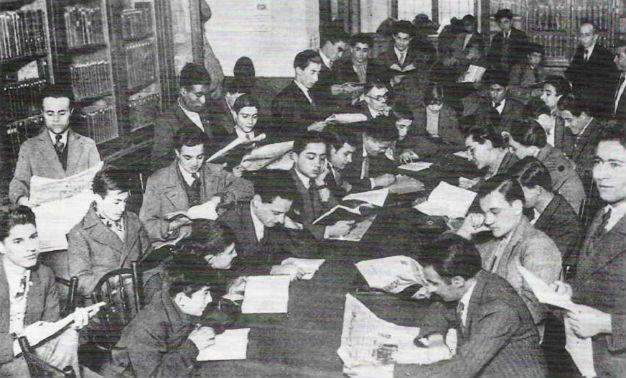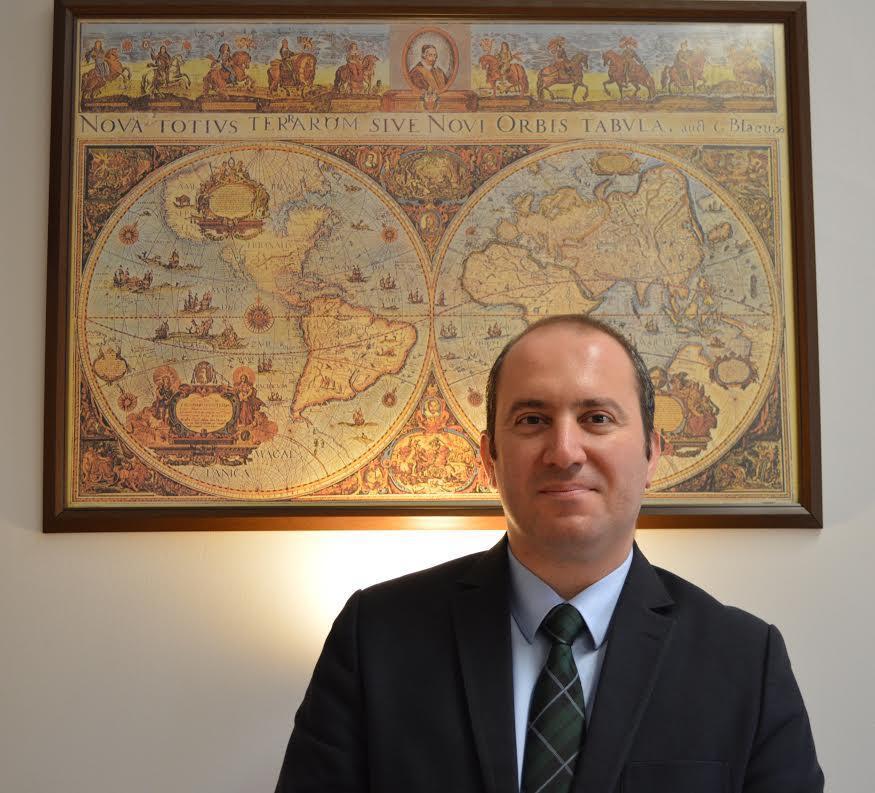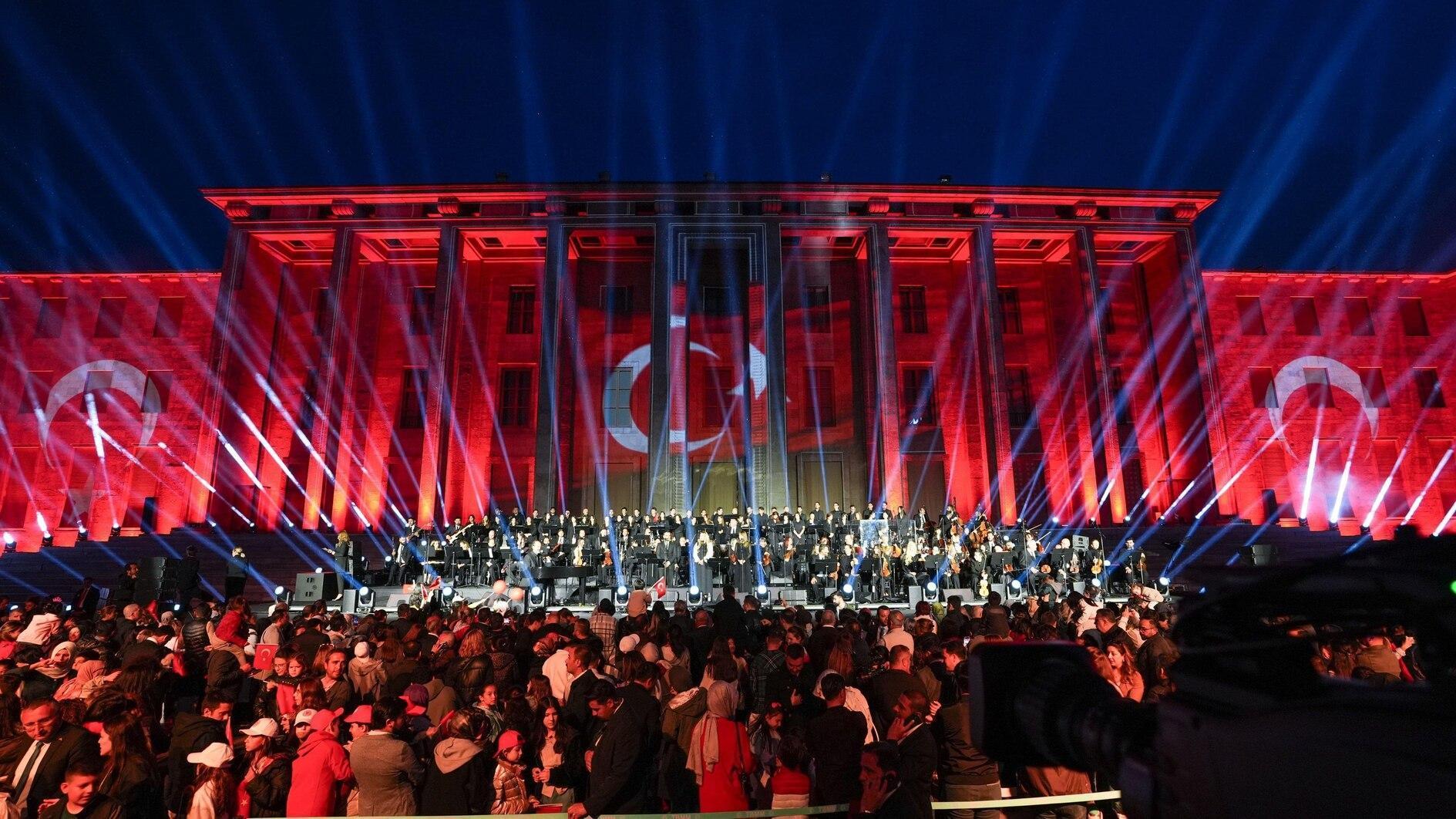INTERVIEW: Niyazi Berkes’ life a window onto Turkey’s national story
William Armstrong - william.armstrong@hdn.com.tr

In the 1930s Niyazi Berkes worked at the library of the Ankara People's Houses, seen in this photograph.
The life of Turkish intellectual Niyazi Berkes bridged the Ottoman and Republican eras and provides a useful window through which to explore his turbulent times. The left-leaning Berkes was invested in the Kemalist project of the early Turkish Republic, but circumstances later forced him into voluntary exile at the beginning of the Cold War.All this is described in a stimulating biography “State and Intellectuals: The Life and Times of Niyazi Berkes” by Yeditepe University associate professor Şakir Dinçşahin (reviewed in HDN here). Dinçşahin spoke to the Daily News about his work on the life of Berkes.
Why did you want to study Niyazi Berkes’ life in the first place? What made him seem like such a useful character to explore?
It was a coincidence. I was doing research on Turkish politics and Professor Feroz Ahmad was one of my professors in the PhD program. In one of Ahmad’s articles he did a good job of using the life and thoughts of Berkes to explore a whole period in a short article. I thought I could enlarge this idea in a book. That was the beginning of my adventure with Niyazi Berkes. The more I read him and read about the events that took place around his life, the more I became convinced that my book would become more about Turkish political life: The life story could be told alongside the national story of Turkey, the national history of Turkey, and intellectual life from the 1920s onward.
Berkes remained a left-leaning Kemalist intellectual throughout his life. You describe in the book how he had a more acute sense of the limits of the republican reforms penetrating traditional society than many others at the time. But he still believed the Kemalists would eventually succeed. What made his thought original compared to other figures at the time?
The way he elaborated Kemalist secularism was unique. He was one of the first scholars in Turkey who traced the origins of Turkish modernization back to the 18th century. Many Kemalist scholars wanted to believe that modernization suddenly started with Mustafa Kemal Atatürk. But although he was a Kemalist intellectual, Niyazi Berkes traces the origins of Kemalism, modernization and secularism back to reformist sultans like Selim III, Mahmut II and even Abdülhamit II.
He is often criticized for being teleological in his history writing. He talked about historical events in the late Ottoman Empire and presented the Kemalist revolution in Turkey as inevitable or unavoidable. But he certainly was unique and original for tracing the origins of Kemalist modernization beck to Mahmut II or Selim III. This idea is today quite conventional but it was original when Berkes wrote about it. He wrote his opus magnum "The Development of Secularism in Turkey" in the 1950s and published it in the 1960s. So he was one of the first to make this point about continuity.
 After graduating in 1928, he worked for a while for the People’s Houses, which were set up across Turkey to spread republican values and modernize traditional society. Could you briefly describe what they were and what Niyazi Berkes’ role was?
After graduating in 1928, he worked for a while for the People’s Houses, which were set up across Turkey to spread republican values and modernize traditional society. Could you briefly describe what they were and what Niyazi Berkes’ role was? 1930 was a turning point in the history of the republic. Today we talk about Kemalist ideology as if it had existed in the same form at the beginning of the 1920s in the mind of Mustafa Kemal, before he became Atatürk. But that is not necessarily so. 1930 was a turning point because it was when the Kemalist revolutionaries realized the need for the formation of an ideology. Before 1930, whenever Ankara faced criticism or rebellions - mostly in Eastern Anatolia - they thought they could suppress it by resorting to violence or using force. But after the Menemen rebellion in 1930, they understood that only using force would not be enough to convince people of the benefits of the revolution.
The difference between the Menemen incidents and all other rebellions in the 1920s was that Menemen was a town in Western Anatolia, quite close to İzmir, the hometown of many Kemalist revolutionaries. They always thought: “OK, the reforms haven’t yet reached Eastern Anatolia because it’s remote, we don’t have great road links, we don't have enough schooling, etc.” But when rebellion came to a place near İzmir they couldn’t really use these excuses. They realized there was a need for an ideology to convince people rather than only using force.
So after 1930 they made a number of changes. They legislated a new press law and they began to use children’s and adult education, the family, religion, language and history to convince people to accept the ideology of “New Turkey.” The "six arrows" of the republican ideology were crystalized after 1930 and were disseminated in Anatolia to the people through institutions like the People's Houses and People's Rooms [in villages]. When he got the opportunity to work in the People's Houses, Niyazi Berkes welcomed the idea of contributing to the dissemination of Kemalist ideology. He was not the kind of nationalist who is willing to fight against the enemy; he was an intellectual or scholar who used his pen and ideas in defense of Kemalism.
He became the librarian of the Ankara People's Houses. But he ended up disappointed in the People's Houses experiment. In the beginning he thought they would really contribute to the modernization of the Anatolian people, but soon he realized that they had become a place of entertainment for upper-middle class Kemalist bureaucrats in Ankara, who wanted to listen to certain concerts or operas. He was disappointed because the institutions defeated their own purpose by only serving the elite of the republic and not the villages, the people of Anatolia living in villages, or remote parts of Anatolia. In the end he resigned from his position at the People’s Houses.
The book’s account of the Second World War and its aftermath is particularly interesting. Turkey observed what became known as “active neutrality” until it finally joined the war on the Allies’ side in February 1945. The internal politics of Turkey at the time are not very well known today, could you just describe some of the debates that were going on and what Niyazi Berkes was doing at the time.
In the past there was an academic consensus about the existence of "active neutrality" in Turkey's foreign policy during the war. But this is a problematic term to use. I'd say "shifting alliances" is better. Turkey was never "neutral," it had “neutrality” that favored potential winners of the war. Between 1939 and 1941 Turkey expected a French and British victory and perceived a threat from Italy. So the Ankara government signed a friendship agreement with France and Britain and pursued domestic and foreign policies that favored Britain and France. But in 1941 things changed in the battlefield; Nazi Germany got the upper hand so Ankara shifted its position and signed a trade and friendship agreement with Germany. So Turkey followed pro-German domestic and foreign policies between 1941 and 1943. Then Stalingrad happened in 1943 and it became clear that Germany was losing the war, so Ankara felt the need to shift its position again toward the winning side: Soviet Russia, Britain and France. After 1943 Turkey pursued policies favoring the Allies.
Niyazi Berkes and other intellectuals in Turkey became victims of these policy changes. When it sided with Britain and France, the Ankara government supported journalists, intellectuals, university professors, and newspapers publishing in favor of Britain and France. But between 1941 and 1943, when people in Ankara were expecting a Nazi victory, they appeased a group of Turkish racists, including authors like Nihal Atsız and Alparslan Türkeş. This was a Turanist, racist group that adapted the Nazi ideology into the Turkish context. After 1943 this group suffered because Ankara wanted to again prove that it wasn't pro-Nazi or pro-German. So some of these people were arrested, put into jail, tortured.
After the war the divide between ultranationalists and progressives continued. But the early Cold War dynamics changed the balance. Niyazi Berkes was effectively fired from his position at Ankara University and ultimately went into “voluntary exile” in Canada in 1952. Could you just flesh out this early post-war period a little?
After the Second World War ended, Turkey was one of the first countries to feel the beginning of the Cold War. Between 1941 and 1943 Ankara had pursued such a pro-German foreign policy that it brought Soviet hostility toward Turkey. Turkey had even allowed the passage of German naval battleships through its straits, which was against the Montreux Convention of 1936. By the end of the war in 1945 Stalin made it clear that Soviet Russia would not renew the friendship agreement that it signed with Turkey in 1925. He said Russia has to renegotiate this trade regime and make sure that the straits would not be used against Russia again. This rang alarm bells in Ankara.
At the same time, some professors in Georgia were publishing articles claiming Kars and Ardahan, which were given back to Turkey in 1918. They said these provinces were actually part of Russia and the Soviets wanted them back. These two factors gave Ankara an opportunity to point to a Soviet threat to Turkey. It said there was a “red threat” against Turkey and a risk of losing Turkey to communism.
But while researching the book I used a lot of American documents, such as telegrams from the U.S. and British ambassadors, which prove that neither British nor American diplomats were convinced that there was a threat to Turkey from Soviet Russia. These diplomats openly said there was not really such a threat. But there was a disagreement between the Pentagon and the U.S. State Department. Officials in the State Department knew there was no threat; officials in the Pentagon also knew there was no threat but they said they could use the idea of a threat. In a report written by Pentagon officials to the U.S. president, they said that in the event of war with Soviet Russia, or in the event that Russia tried to invade the oil-rich countries of the Middle East, then Turkey would be useful and it would give the U.S. at least two weeks. So they wanted Turkey in the Western bloc. This is how Turkey became part of the Marshall Plan and Truman Doctrine.
Ankara also used this argument about a domestic red threat within Turkey. But the problem was that there weren't any communists in Turkey. The only kind of leftist people the Ankara government could find were people like Niyazi Berkes who were not really communists at all. They were actually Kemalists, leftist Kemalists, people of the state, people of the republic. But the government mobilized against these professors and eventually asked Ankara University to expel Niyazi Berkes, Behice Boran, Pertev Naili Boratav, and Muzafer Şerif. At first the university resisted but it later agreed to the demands. Then the courts resisted, nullifying the decisions of the university councilors and returning the professors to their positions.
But eventually the government found a sneaky way to get rid of the four professors: It cut the budget allocated to the chairs of these professors at Ankara University and then expelled them from their positions. After this, it is ironic that none of these professors tried to go to the Soviet Union after leaving Turkey. Berkes went to the free world, to Canada. He found a position in the Institute of Islamic Studies at McGill University and he ended up spending his whole academic life abroad.
*Subscribe to the Turkey Book Talk podcast via iTunes here, Stitcher here, or Podbean here.
















